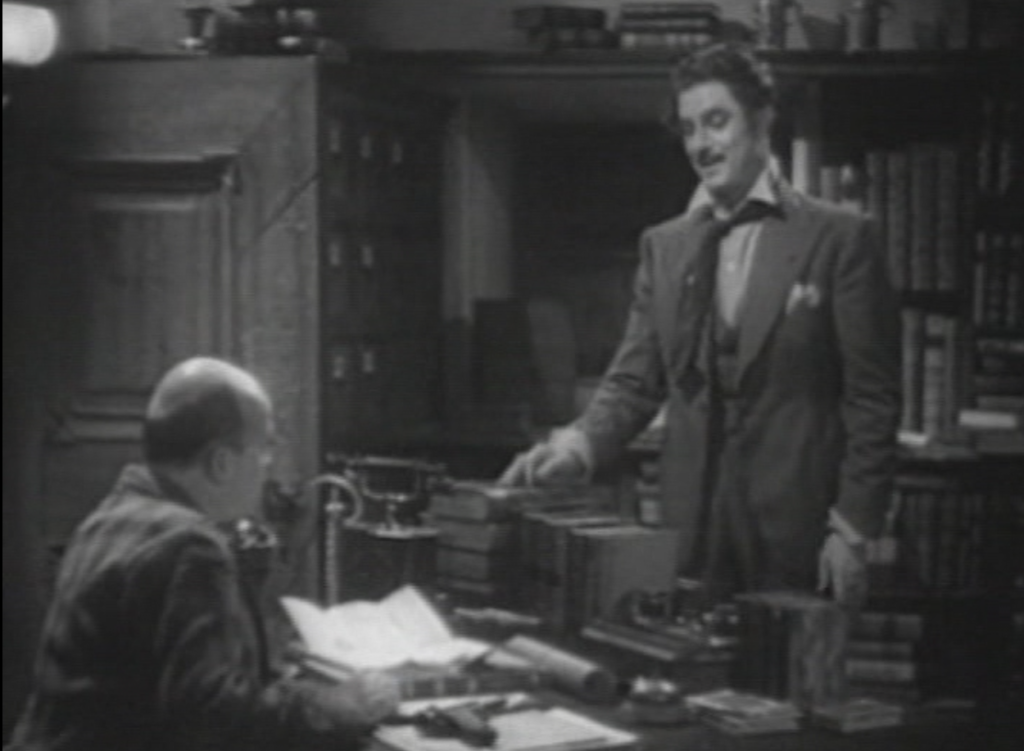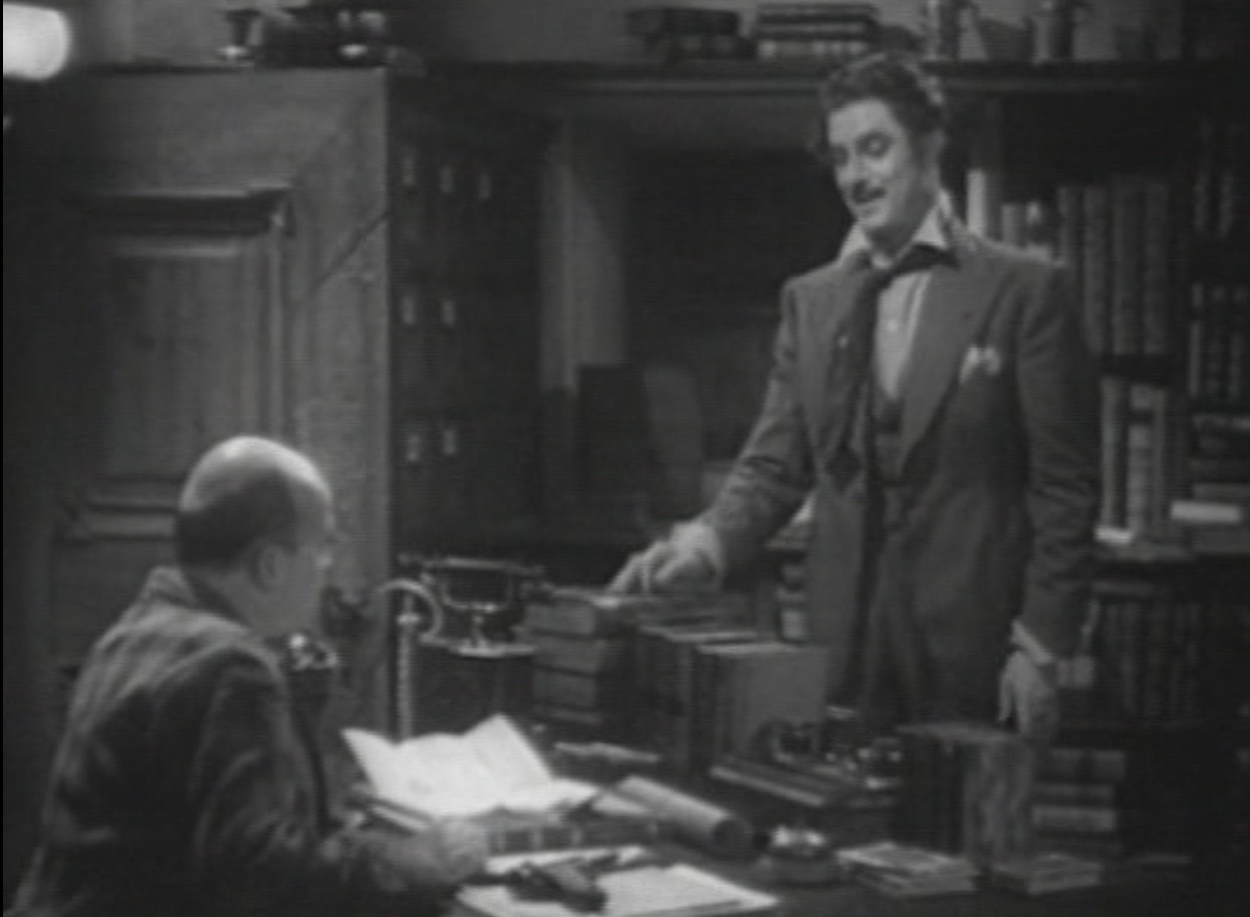Movie Review: The Adventures of Tartu (1943) directed by Harold S. Bucquet
Dateline: London, 1940. The Blitz is on, and recovery crews are working on a damaged hospital. One of the German bombs failed to go off, and Captain Terence Stevenson (Robert Donat) is called on to disarm it. (I got Danger: UXB flashbacks.) This task is complicated by the presence of a little boy patient who can’t be moved and the nurse taking care of him. Everyone involved demonstrates the British stiff upper lip. Tense moments later, the bomb is disarmed, but Captain Stevenson is called to Headquarters.

It turns out that our protagonist was in civilian life a chemical engineer, and due to his background is fluent in both Romanian and German. Even though he’s not been trained in spycraft, Captain Stevenson turns out to be the man the British need for a desperate mission. It seems they’ve received information that the Germans are developing a new poison gas in occupied Czechoslovakia. And as it just so happens, a chemical engineer and member of the Romanian Iron Guard, Jan Tartu, has fallen into the hands of the Resistance and died. They’ve managed to conceal this fact from the Fascists, so the plan is to have our hero impersonate Tartu and infiltrate the Nazi poison gas factory.
Jan Tartu soon pops up at the German consulate in Czechoslovakia, fleeing the Romanian Resistance, and is accepted as a guest worker. He’s a foppish lecher who’s even more enthusiastic about being a Nazi than the German soldiers. Tartu is assigned Inspector Otto Vogel (Walter Rilla) as his mentor, and billeted at the house of widow Anna Palacek (Phyllis Morris) where Otto has a room. Also in the house is Anna’s adult daughter Paula (Glynis Johns), who does forced labor at the artillery shell plant, and the beautiful collaborator Maruschuka Lanova (Valerie Hobson).
Tartu’s one contact in the Underground is caught by the Gestapo within moments of their meeting and executed. So he must navigate the task of getting assigned to the poison gas laboratory and contacting the local resistance to help blow it up without an easy entry. Perhaps his charm and cunning will help?
This propaganda film (also known as Sabotage Agent) was designed to raise British morale by depicting their secret agents as heroes while the Nazis are cruel, corruptible and greedy. Robert Donat is clearly having a lot of fun in his dual role as the upright Stevenson and the slimy (yet with a moral core) Tartu. Maruschuka is smoldering as the woman who’s playing up to the invaders for a chance to regain her family fortune…and/or get information to the Underground.
Because of the film standards of the time, much of the reality of Nazi occupation has to be softened for the screen. Those denounced are taken away to be executed offscreen, Maruschuka keeps her clothes on during liaisons (a big moment is when she takes off her hat) and there’s no mention of extermination of specific groups of people. The poison gas is only described and we never see it in action.
In the last few minutes, his identity as a spy revealed, Tartu/Stevenson gets to be an action hero, punching and shooting Nazis. (It’s a bit rushed to finish the movie in a reasonable time limit.) The gas factory has some impressive sets, though I suspect they were mostly painted backdrops.
I was pleased to discover my copy was the British version of the film, which includes a brief scene of Stevenson saying farewell to his mother that was clipped from the American cut.
This is a decent thriller with good casting, even if it’s pretty obvious propaganda. Well worth watching if you like your spy stories to have clear good and bad guys.

